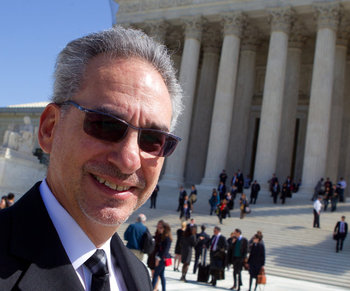(p. A15) Last June, the Los Angeles Times reported that about 70 golden eagles are being killed per year by the wind turbines at Altamont Pass, about 20 miles east of Oakland, Calif. A 2008 study funded by the Alameda County Community Development Agency estimated that about 2,400 raptors, including burrowing owls, American kestrels, and red-tailed hawks–as well as about 7,500 other birds, nearly all of which are protected under the Migratory Bird Treaty Act–are being killed every year by the turbines at Altamont.
A pernicious double standard is at work here. And it riles Eric Glitzenstein, a Washington, D.C.-based lawyer who wrote the petition to the U.S. Fish and Wildlife Service. He told me, “It’s absolutely clear that there’s been a mandate from the top” echelons of the federal government not to prosecute the wind industry for violating wildlife laws.
Mr. Glitzenstein comes to this issue from the left. Before forming his own law firm, he worked for Public Citizen, an organization created by Ralph Nader. When it comes to wind energy, he says, “Many environmental groups have been claiming that too few people are paying attention to the science of climate change, but some of those same groups are ignoring the science that shows wind energy’s negative impacts on bird and bat populations.”
For the full commentary, see:
ROBERT BRYCE. “Windmills vs. Birds; About 70 golden eagles are killed every year by turbines at California’s Altamont Pass, reports the LA Times..” The Wall Street Journal (Thurs., March 8, 2012): A15.
(Note: the online version of the article is dated March 7, 2012.)









